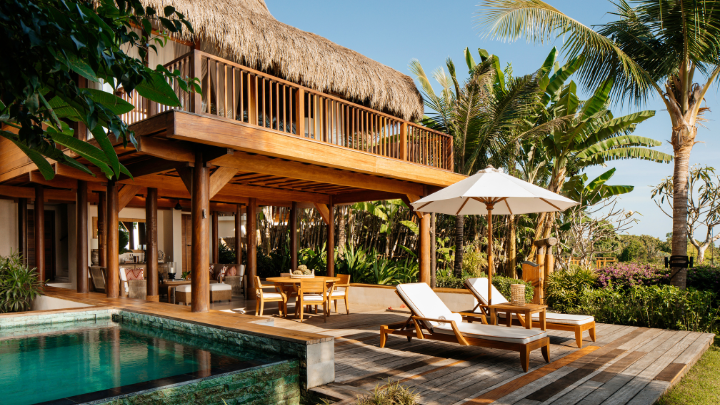Sumba, Indonesia
Sumba has long been a castaway corner of Indonesia where very little has changed. Whilst other islands have embraced tourism, life on Sumba is still relatively untouched and the local traditions are still very much in place – The Marapu religion follows a belief of a balance of nature, man and influence of ancestors. Many locals still live in traditional Sumbanese villages, where houses are built with 25-metre-high roofs and are surrounded by wild nature, wildlife and unspoilt beaches. A stay here is more than just a beach break, it’s a privileged chance to dip your toe into one of Indonesia’s most unspoilt civilisations.
Nihi, Sumba
Nihi, voted one of the worlds very best resorts (not for its polished grandeur….but more for its true escapism and laid-back, understated luxury) certainly put Sumba on the map. Guests are fully immersed in the uniqueness of the resort, embracing the local culture in every way; from its incredible open plan Sumbanese villas to its immersion in the local culture with treks through the countryside and visits to local villages. It is firmly at the top of our wish list but is only available for the privileged few who have the budget to stay there.
In recent years, a few newcomers have emerged on the scene, allowing visitors from every walk of life (and bank balance) to visit. These are all small, intimate retreats, built in harmony with the untouched environment, so don’t worry, there is still a small footprint from few visitors. However, we are delighted to be able to suggest Sumba as a special destination to more of our guests seeking unspoilt beaches and cultural immersion.
Maringi Eco Resort, Sumba
On a recent trip to Indonesia I visited three new openings, starting with a very special tour of a unique hospitality school – Maringi, a small eco-resort in a rural corner of the island, not far from the airport and one of the projects of the Sumba Hospitality Foundation.
Up to 70 teenagers from remote parts of the island are offered the incredible opportunity to train for a career in hospitality. Most will go on to work in the hotels around the island or travel over to Bali and work in the many resorts. It is a two-year course and during their time at Maringi, students will learn different areas of hospitality from cheffing to waiting, wellness or front of house skills, they learn language and about permaculture and sustainability. It is a truly special place where up to 18 guests can stay ‘on campus’ in 9 different rustic pavilions, some built from bamboo and banana leaves and others more solid structures around a small pool. The staff is almost entirely made up of students who practice their skills on the many different visitors to the site. Guests are encouraged to join the lessons and even teach new skills – it really is unlike anywhere you’ve stayed before and a unique way to meet locals and learn about their culture and way of life.
This is simple living and would be a wonderful place to spend a few nights, twinned with one of the beach retreats in Sumba.
The Sanubari, Sumba
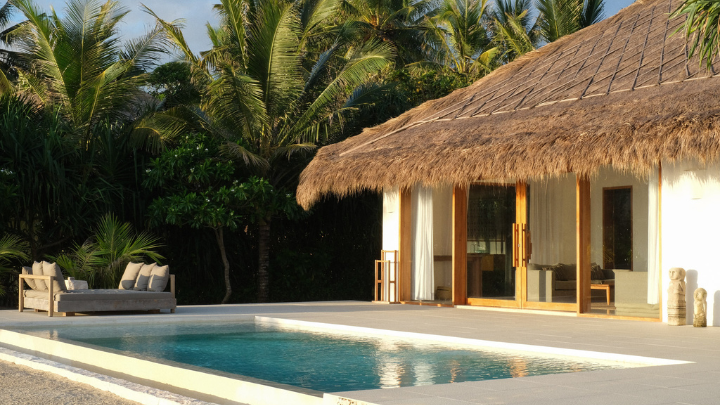
Wow, what a special place! I’d seen the pictures and knew that this was one of the best beaches in Sumba, but I just didn’t quite grasp the enormity of the untouched wilderness in which this intimate retreat resides. Surrounded by a 100-hectare nature reserve and fronting over two kilometres of white sand beach, the nine simply furnished villas are minimal in design to make the most of the location. Floor to ceiling windows open out to huge outside spaces, most with private pools steps from the sand. A few of the villas look across the gardens and rice fields beyond. Hand crafted furniture and local artefacts along with local artisan weavings give a sense of place.
At the centre of the resort is an open sided restaurant serving a delicious mix of western and Indonesian dishes and further along the beach a cute tiki style bar serves refreshing cocktails as the sun sets over the horizon. Whilst I was there, a restaurant and pool were being built to create a relaxing social space for guests to enjoy the magnificent views.

The Sanubari team, mostly from the local villages, were so gracious with giant smiles and couldn’t do enough for you. This is the kind of place where you are greeted as family and encouraged to just kick back and embrace all that’s special about Sanubari and Sumba. If you can tear yourselves away from the beach, a number of activities are on offer. Firstly, the resort has its own stables where the horses are lovingly taken care of in beautiful stables – imagine galloping down the beach at sunset or swimming with the horses (one of the unique offerings in Sumba). They’ll also take you to one of the island’s most beautiful waterfalls, stopping off at a local village to learn traditional ikat weaving.
When the owners imagined Sanubari, they envisioned a space that feels homely, to be oneself, with little touches of luxury and they have achieved just that. This is a special place and I hope to return.
Cap Karoso, Sumba
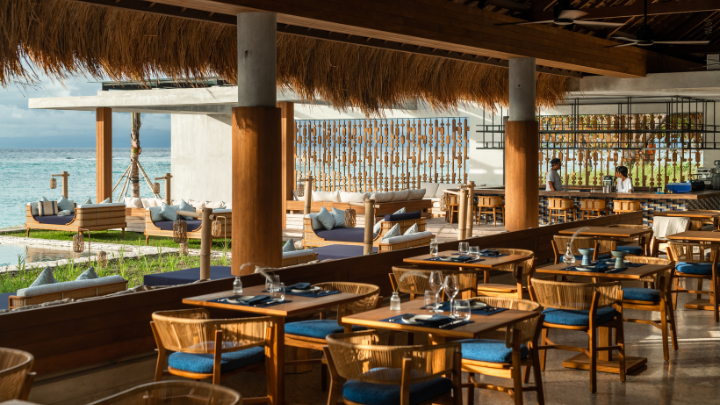
Located on the more rugged west coast, with a different setting and ambience, Cap Karoso is a more sophisticated, slightly larger but still intimate resort, beautifully designed for those who prefer a little more choice. I can’t tell you how happy I was that such a resort was opening on Sumba, a stylish retreat with a choice of accommodation to suit all budgets, from simple studio rooms up to larger two- and three-bedroom pool villas. The French owners’ mission was to create a place for guests from all walks of life to come together and immerse themselves in this special place.
They also encourage this on a local level, with one of the three restaurants inviting top chefs from around the world to visit and create a tasting menu for guests to enjoy at a communal table, sharing stories of their experiences on the island and enjoying incredible cuisine. I loved this concept and during my visit I met many of the guests from all different backgrounds and what led them to Cap Karoso and Sumba. The whole vibe around Cap Karoso was incredibly friendly and relaxed and the quality of the food and service was quite incredible considering how remote this is.
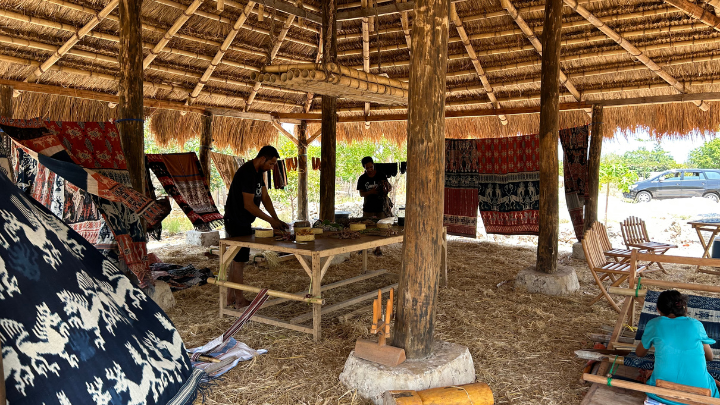
The resort is built in levels sloping down to the beautiful white sand beach, with crystal clear water lapping the shore. A wonderful beach for a morning walk but equally ideal to swim from. Even though this is a modern resort, there is an incredible sense of place with subtle touches of local artwork and fabrics in the rooms and central to the resort is a spa, creatively built in traditional Sumbanese style. Guests are also invited to an ikat workshop, where they can witness the dying and weaving of this unique way of creating the patterned cloth, so typical of Sumba. Whilst there, we also visited a local village and I honestly don’t think I have ever had such a genuinely authentic encounter. I appreciate that they must have quite a few visitors, but they would only be from Cap Karoso as there isn’t much else around and the resort does move to different villages each day. Tourism didn’t seem to have impacted their lives in any way. The houses were all traditional in style and we were invited in to spend time with one of the families, who were just as fascinated with us as we were with them. No one was trying to sell anything so we just sat and tried to communicate via sign language….. and our guide of course, who was also from one of the villages.
I’m actually pinching myself as I write this as I feel so lucky to have been able to visit Sumba – writing about it is taking me back to a place I loved and felt so privileged to have been able to experience.
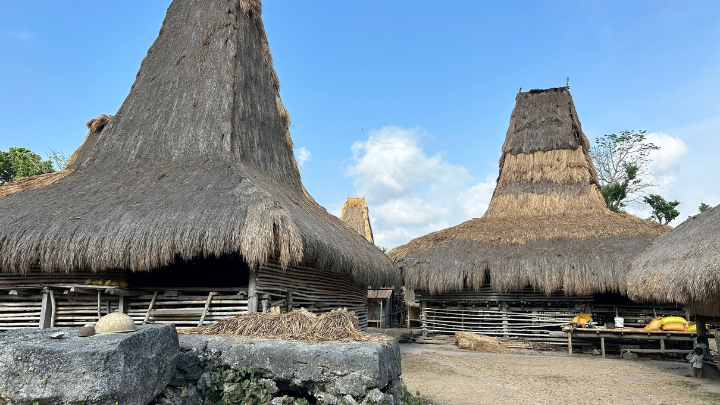
I’d love to recommend it to our Turquoise clients and think it is a wonderful addition to any trip to Bali (another favourite place…. But that’s another story).
I’ve created an itinerary to show how you can incorporate Sumba into an itinerary to the more off the beaten track parts of Bali. This is purely a suggestion, and our experienced team can tailor an itinerary to fit your dates and requirements. Click here to make an enquiry.


